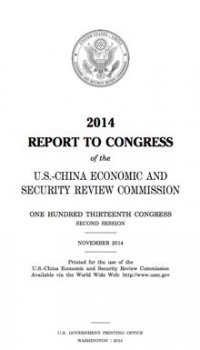In 2001, the Pentagon anticipated it would be in a position to confront China militarily by 2015. However, the transfer of troops from the Gulf and Europe to the Far East was significantly delayed as a result of both the Resistance in the Levant, supported by Iran, and Russia in Europe. Meanwhile, China’s development was much fastern than expected. Accordingly, as Manlio Dinucci observes, the US-China Economic and Security Review Commission has sounded the alarm: it’s time for Washington to act against Beijing if it wants to maintain its domination over the world.

The Chinese government resorts to "unfair" trade practices, by stimulating the economy and exports through public aid instead of implementing "substantial economic reforms": this is the first accusation that crops up in the report submitted in November to the United States Congress by the U.S.-China Economic and Security Review Commission.
Despite an increase in U.S. exports to China, the U.S. trade deficit with that country climbed in 2013 to 318.4 billion dollars and continues to grow. This is the highest recorded trade deficit between the two countries worldwide. The value of goods "Made in China" imported by the United States exceeds four times the value of those "Made in the USA" which are exported to China. This contributed, from 2001 to 2014, to a 29% job loss in the U.S. manufacturing sector.
However, the Commission had to recognize that this is a consequence of the outsourcing of manufacturing by U.S. corporations to China (a source of lower-cost labor and other benefits), enabling them to extract colossal "profits", while it is the workers in the U.S. who suffer the "negative consequences" ... notwithstanding the partial employment recovery that was registered as a result of Chinese investment in the U.S., which in 2014 surpassed U.S. investments in China.
Chinese companies increasingly invest also in Europe, Asia, Africa and Latin America, offering much more favorable conditions compared to those of U.S. multinationals.
In other words, contrary to what they had intended, the United States failed to subjugate China to its neo-colonial exploitation mechanism, as a mere cheap workforce reserve and a market for U.S. products. It also came short of achieving the full "liberalization" of the Chinese economy - underlined the Commission - which is still "dominated by publicly-owned enterprises". Consequently, the United States "refuse to aknowledge China’s status as a market economy".
The Commission voiced concern about the modernization of Chinas’s armed forces and the resulting increase in the military budget, which jumped to $ 131 billion in 2014. But it didn’t say that the overall military spending of the United States, with a population four times lower than that of China, amounts to almost one trillion dollars annually. Nor did it say that, according to official Pentagon data, while the United States has 576 military bases abroad (with many more at its disposal), Chinese military bases are located only on Chinese territory. And there is a chain of U.S. military bases encircling precisely China.
The Commission requested that Congress increase the financial allocations so that the United States can boost their military presence in the Asia/Pacific region to "counteract China’s growing military capabilities." With currently 360 000 soldiers, 200 ships and 1500 aircraft, Pacific Command (PaCom) will see its forces further strengthened. According to the plans of the Pentagon, by 2020, 60% of all U.S. Navy ships and bases will be concentrated in the Pacific.
In the Quadrennial Defense Review 2014 the Pentagon claims that "The United States has contributed, especially in the last six decades, to the peace and prosperity in the Asia-Pacific region." As evidenced by the massacre of more than half a million Indonesians in the coup staged by the CIA in 1965, and 2-3 million Vietnamese in the US-led war in the 60s and 70s.
titre documents joints

’US-China Economic and Security Review Commission - Report 2014
(PDF - 8.2 MiB)

Quadrennial Defense Review 2014
(PDF - 3.5 MiB)

 Articles by this author
Articles by this author Send a message
Send a message
















Stay In Touch
Follow us on social networks
Subscribe to weekly newsletter